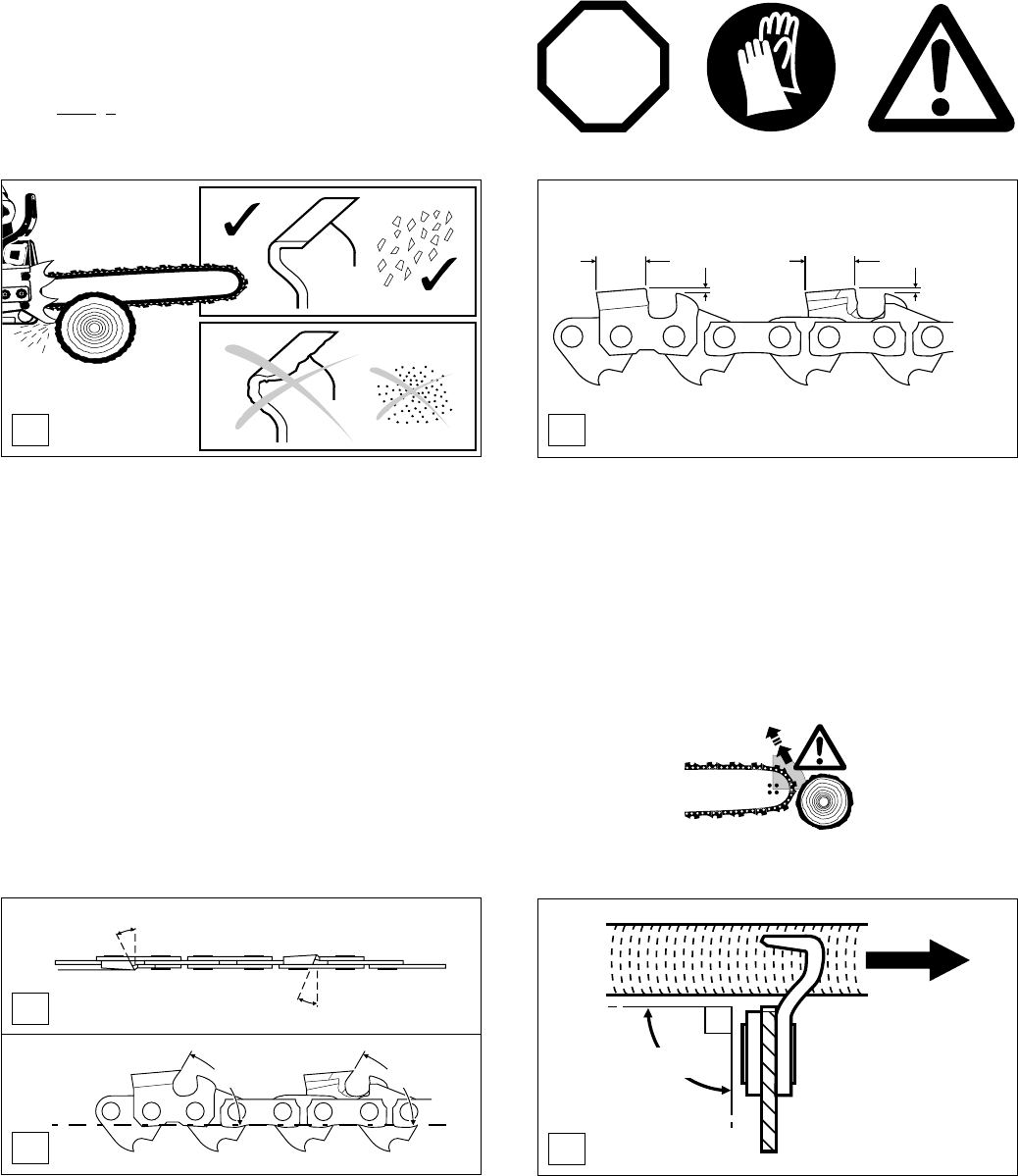
24
C
D
Files and how to work with them
- Sharpen using a special file holder with a saw chain round
file. Normal round files are not appropriate for this work.
See "Accessories" for the order number.
- File the first cutter half with a 7/32" (5,5 mm) dia. round file,
then switch to a 3/16" (4,8 mm) dia. file.
- The file should cut only when pushed forwards (arrow).
Lift the file when leading it backwards.
- First sharpen the shortest cutter. The length of this cutter is
then the nominal value for all other cutters of the chain.
- Replaced cutters must be exactly adopted to the shape of
the other cutters. This is also true for the depth gauges.
- Always guide the file horizontally (90
o
to the guide bar).
- The sharpening angle of 25
o
must be equal for all cutters.
Different angles result in a roughly, irregularly running
chain, increase wear and tear and cause chain ruptures.
- The front rake of 60
o
depends on the cut depth of the round
file. If the file to be used is guided correctly, the correct front
rake results automatically.
MAINTENANCE
Sharpening the saw chain
CAUTION: Before doing any work on the guide bar or
chain,
always switch off the engine and pull the plug cap
off the spark plug (see "Replacing the spark plug"). Al-
ways wear protective gloves!
The chain needs sharpening when:
- The sawdust produced when sawing humid wood looks like
wood flour.
- The chain penetrates the wood only under great pressure.
- The cutting edge is visibly damaged.
- The sawing device is pulled to the left or right when sawing.
This is caused by an unequal sharpening of the chain.
Important: Sharpen regularly, but only slightly.
Generally 2-3 touches are enough.
Have the chain resharpened in a service center when you
have already sharpened it yourself several times.
Characteristics of a correctly sharpened chain (type 099):
- All cutters must be of the same length (=). Cutters with
different lengths result in a rough running of the chain and
produce cracks in the chain.
- The best cutting results are achieved with a depth limiter
distance of 0.65 mm (.025"). The distance between the
depth limiter and the cutting edge determines the depth of
the cut.
CAUTION:
If the distance is too wide, the risk of kickbacks
increases.
=
90°
25°
25°
=
0,65 mm
(.025")
A
60°
60°
E
B
STOP


















